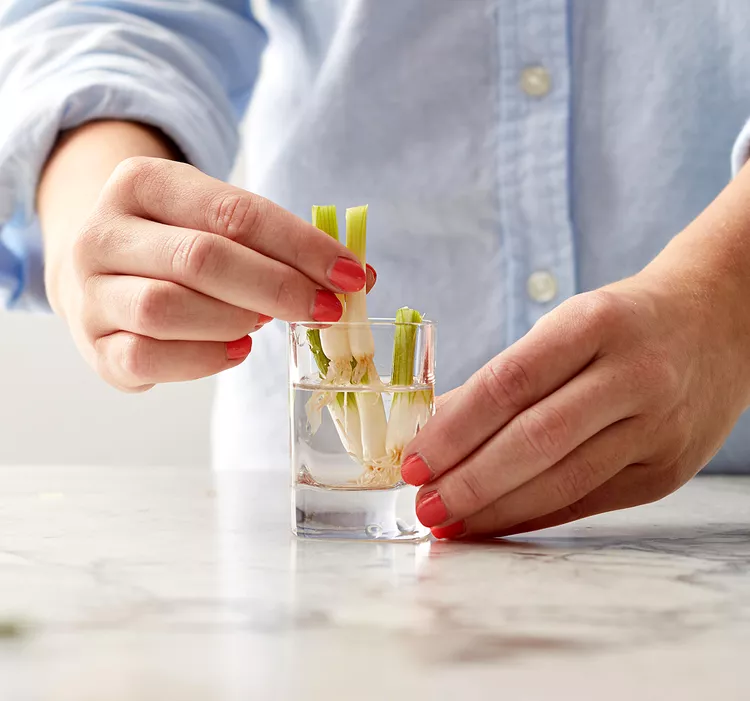After cutting up green onions during your meal prep, you're usually left with a little of the white part with roots that you toss out along with your other kitchen scraps. But when you know how to regrow green onions from those scraps, you'll get even more tasty green shoots to eat for free. This step-by-step guide explains how to regrow green onions in either water or soil.
Why Regrow Green Onions?
When you want to plant and grow green onions, your first thoughts might be of planting seeds outdoors or starting them indoors in early spring for transplanting into the garden. But you can also use the same green onions you bought at the store to grow more green onions. When you upcycle your veggies, you’ll reduce a little waste (always a good goal!) and have a fun project watching new shoots grow.
How to Regrow Green Onions in Water
Follow these steps and watch the tops of your green onions start regrowing from scraps in just a few days.
- Select green onions that have healthy white roots attached to the bulb.
- With a knife, trim the green stalks and white bottoms an inch or so above the roots. Use or store them as usual.
- Place the trimmed bulb portion with the root ends in a clear glass jar. The roots should touch the bottom of the jar.
- Add pebbles or marbles around the root ends to keep them steady and upright in the jar.
- Add a small amount of water to the bottom of the jar so that the roots are submerged, but the rest of the cut end is above the water.
- Place the jar on a sunny windowsill to grow.
- Change the water every few days to help prevent root rot.
- After a few days, you’ll see green sprouts growing in the center of the root end. After about a week, new dark-green shoots will reach full size.
- Harvest the new growth when it is 4 to 5 inches tall by lifting the onion from the water and trimming off the new growth, leaving an inch above the roots as before.
- Place the roots back in the jar and fill the jar with fresh water to grow more green onions.
How to Regrow Green Onions in Soil
You can’t grow green onions in water forever because the plant will eventually weaken and stop producing, so you need to move your green onion plants from water to soil. Here's how to grow green onions in a pot.
- Follow the first two steps above.
- Choose a growing container with drainage holes so water can drain quickly to prevent root rot. Fill it with well-draining potting soil.
- Bury all parts of the trimmed bulb portion with the roots in the soil, except for the very top of the cut bulb.
- Place the pot on a sunny windowsill and water it once a week or when the soil feels dry.
- Harvest the new green shoots with scissors by cutting close to the soil level.
- Leave the rooted onion base in the soil to grow more green onions.
How to Store Green Onions
When you harvest your new crop of green onions, there are a few ways to extend the shelf-life of your regrown veggies. You can use all parts of a green onion. One storage option is to use the fresh-cut flowers strategy, which involves putting the onions in a jar filled with water and placing the onion “bouquet” in the refrigerator. Another storage technique involves sealing the onions in a zip-top plastic bag with a lightly damp paper towel. Whichever storage technique you choose, plan on examining the green onions every few days, removing any pieces that show signs of wilting or decay.




















